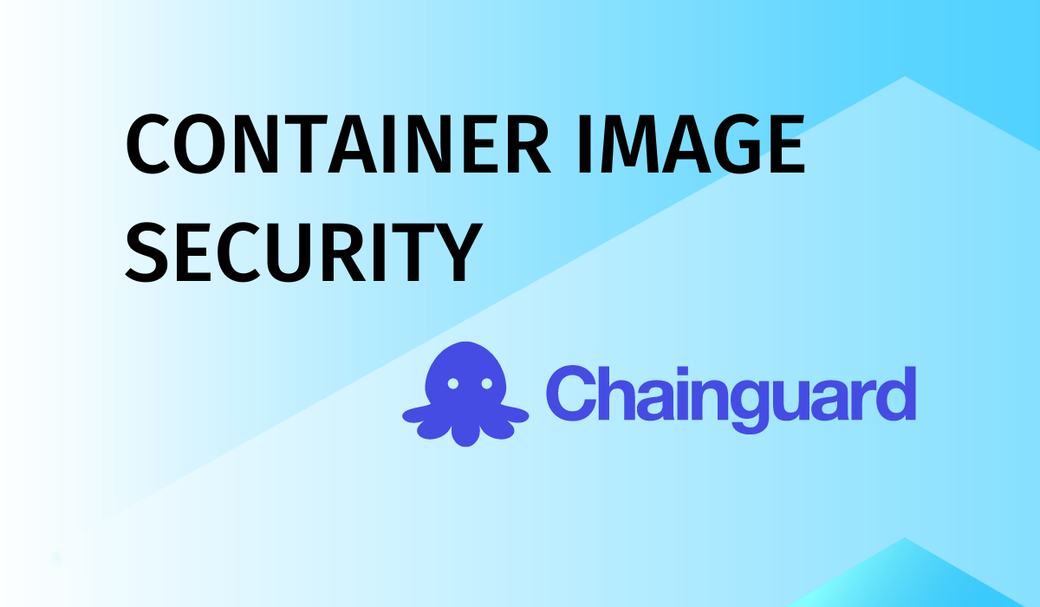Table of Contents
Containerization has become the standard way to deploy applications for all your enterprise needs. Its many benefits—including increased scalability and efficient resource utilization—have made it very popular, and containers have become a critical component of modern systems. As such, it’s essential to ensure the security of container images.
Container image security protects the integrity and reliability of the images that encapsulate your application and its dependencies. It’s one of the most vital areas of security, as even a single vulnerability within an image can potentially jeopardize the entire environment of your organization.
For instance, in August 2021, Docker discovered five malicious container images that secretly mined cryptocurrency using the systems of 120,000 users, demonstrating how easily things can spiral out of control.
This article explores the world of container image security and how innovative tools like Chainguard and similar solutions can revolutionize protecting your infrastructure.
#More about Container Image Security
Ensuring the security of container images is crucial in order to protect the applications and infrastructure of your distributed systems. The three key aspects of image security are as follows:
- Vulnerability scanning
- Supply chain security
- Runtime security
#Vulnerability Scanning
Scanning container images for vulnerabilities can uncover many issues, including vulnerable layers and misconfigured hosts. A report in 2020 revealed that more than half of the images in the Docker Hub repository, as in more than two million Docker images, had critical vulnerabilities.
To protect your application, customers, and infrastructure from malicious users, it’s crucial to scan images to ensure they’re safe. By detecting and addressing vulnerabilities in container images before deployment, you can significantly enhance the security of your system.
#Supply Chain Security
You can help maintain the security of container images by exclusively relying on reputable repositories and confirming that no one has tampered with the images through man-in-the-middle or similar attacks.
Such attacks intercept the communication between the developer’s system and the registry. They then provide an outdated version of the image with known vulnerabilities or serve a tampered version containing malicious code.
However, using trusted providers and signed images for both internal and external base images validates the authenticity of image layers. This ensures they are safe to use and prevents these kinds of attacks.
#Runtime Security
If you want to improve your IT security, it’s important to prioritize continuous security monitoring during the software development process. This helps protect your containerized applications from attacks while they’re running.
Implementing the principle of least privilege when designing containers and utilizing private networks can prevent attackers from accessing the entire network if one component is compromised. Both of these policies ensure the threat is limited in its scope, securing the overall system.
#How Container Image Security Can Be Achieved
There are several methods and best practices you can follow to ensure your container images are secure. With the right security tools and technologies, organizations can greatly enhance container image security and reduce potential risks and vulnerabilities throughout the container lifecycle.
#Image Signing
You can use image signing to ensure the authenticity and integrity of container images. This involves digitally signing container images using cryptographic methods to verify integrity between client and registry. When new images or layers are created or used, the signs can be verified to demonstrate authenticity between the containers.
Image signing enables verification of the image source and detects any tampering or unauthorized modifications, so you can be assured no tampering has happened in the overall image, and it doesn’t induce vulnerabilities. Popular tools such as Notary/Notation or Cosign can be used to sign the images.
#Application Scanning Before the Build to Detect Possible CVEs
You should always perform vulnerability scanning and security assessments of application code before creating container images. This practice helps detect and handle any potential vulnerabilities and CVEs present in the application codebase.
This task is important but can easily become challenging because of the sheer number of images on a simple infrastructure. In such cases, solutions like Chainguard, which offer images with zero CVEs, can prove valuable. They also streamline the process using round-the-clock automation.
#Image Scanning via CI/CD
You can also improve your image security by integrating automated image scanning earlier into the CI/CD pipeline and “shifting left.” This allows you to thoroughly assess image contents, including any vulnerabilities or misconfigurations in operating system packages, libraries, and dependencies, early on in the supply chain. Detecting and addressing these issues early on can allow you to quickly remedy potential security risks.
#Image Scanning on the Container Registry
Finally, image scanning the container registry is an essential step towards enhancing security. This provides continuous monitoring for your registry layers, and you can be automatically informed of any new vulnerabilities if they pop up.
Popular container registries like Docker Hub or Amazon Elastic Container Registry (ECR) offer scanning capabilities that automatically check container images for vulnerabilities, signed status, and compliance issues. This process ensures that only trusted and secure images that are verified by your registry are used in production environments, thereby preventing the deployment of insecure images.
#Ensuring Container Image Security with Chainguard

When looking for tools that offer complete container image security from start to finish, Chainguard is a good option. It includes hardened images and a platform called Enforce that utilizes several methods to detect and resolve vulnerabilities, safeguard the supply chain, defend containerized applications against attacks, and provide secure images with zero vulnerabilities.
Enforce is an excellent solution for managing your software supply chain. It allows you to easily monitor your supply chain and patch any security weaknesses in your software. You can also enforce policies with it to ensure the safety of your entire cluster, such as restricting the use of unsigned images.
#How Chainguard Works
Chainguard Enforce can monitor your software metadata in real time without the need for agents. By integrating seamlessly with your CI/CD systems, this platform can help you shift left in a containerized environment, safeguarding your commits, builds, and artifacts from various attacks.
Chainguard Enforce supports SBOM management, which involves generating, signing, and managing SBOMs across all workloads, making vulnerability remediation more streamlined if one specific component of your image is compromised. Moreover, the platform comes with built-in compliance policies, like only allowing signed images for deployments. You can also deploy custom policies, such as SLSA and CIS, to ensure that regulatory requirements are met.
With its ability to connect and continuously monitor your various clusters, this tool is an excellent fit for containerized environments where all components must satisfy policy requirements. However, since it primarily focuses on SBOMs and container orchestrators, it may not be as suitable for environments and codebases that do not use containers.
Chainguard container images are powered by Wolfi OS and optimized for both size and security. With an average 80 percent reduction in size, there are fewer potential points of vulnerability and fewer CVEs. The smaller size improves overall security, and the out-of-the-box SBOMs provide artifact provenance during build time.
#Similar Solutions to Chainguard
When it comes to securing your containers, Chainguard is just one of the many tools available to you. Keep in mind that there is no one-size-fits-all solution, and your security needs may vary based on factors like cost and features.
Other alternative tools that can strengthen your container security include Clair, Twistlock, and Aqua Security.
#Clair

Clair is an open source vulnerability scanner designed for container images. It analyzes container images and provides detailed reports on any known vulnerabilities present in the image’s components. It can also be integrated into CI/CD pipelines for automated vulnerability scanning and supports various container registries.
#Twistlock

Twistlock is a complete security solution for containers that provides a way for you to automatically and continuously scan for vulnerabilities in container images. Moreover, it helps enforce security policies and protects containers during runtime to facilitate reports that you can share across teams. The tool integrates with popular container orchestration platforms and provides actionable insights to mitigate security risks with its vulnerability explorer, which can help you integrate with different tools, dashboards, and processes.
#Aqua Security

Aqua Security is a container security platform that helps you secure your application throughout its lifecycle. It offers vulnerability scanning, image assurance, runtime protection, and compliance auditing.
The platform provides deep insights into container images, offers customizable security policies, and helps enforce best practices for container security.
#Why Use Container Image Security Tools?
Solutions like Chainguard and other container image security tools are useful in enterprise settings for various reasons. First, these solutions provide vulnerability scanning capabilities that help identify and address potential security weaknesses and vulnerabilities in container images. By detecting vulnerabilities early on, organizations can mitigate the risk of exploitation by malicious actors.
Secondly, the policy enforcement features offered by these solutions enable organizations to define and enforce security policies for container images. This ensures that images meet compliance requirements, adhere to best practices, and maintain a consistent security posture across the containerized environment.
The continuous monitoring capabilities of these solutions allow for real-time visibility into the security state of container images. This helps organizations proactively identify any emerging threats or vulnerabilities and enables timely remediation.
Moreover, recent attacks like Log4j, which caused malicious code execution, have emphasized the significance of supply chain security, in which solutions like Chainguard play a critical role. They help organizations establish a more secure container supply chain by ensuring the integrity and trustworthiness of container images throughout the development and deployment process.
In addition to these benefits, container image security solutions often align with government compliance requirements. They assist organizations in meeting industry-specific regulations and standards, such as Federal Risk and Authorization Management Program (FedRAMP) compliance, which is particularly important for government agencies and contractors operating in the public sector.
By using these container image security solutions, organizations can strengthen their overall security posture, comply with relevant regulations, mitigate supply chain risks, and ensure the trustworthiness and integrity of their containerized applications and infrastructure.
#Conclusion
You should now have a clear understanding of the significance of image security as a critical aspect of your security practices. However, manually implementing image security can be labor-intensive and requires careful planning. Tools like Chainguard can help enhance the container image security of your infrastructure while helping you abstract away the complexity of doing all this hardening, auditing, and compliance stuff on your own.
Apart from image security, other aspects like safeguarding the orchestration system, implementing robust network policies, managing access controls, and monitoring the cluster environment are equally important for a secure container ecosystem. Addressing both container image security and cluster security helps organizations establish a comprehensive foundation to protect against potential threats and malicious actors.










